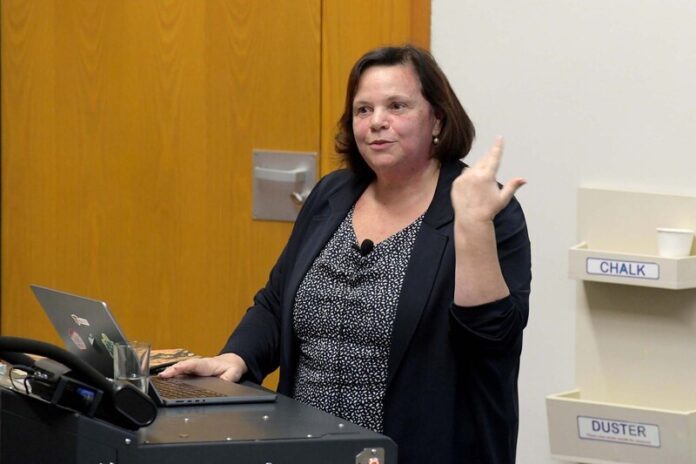
The University of Cape Town (UCT) recently celebrated the completion of the RADIOMAP programme, a three-year exchange initiative that has strengthened South Africa and Italy’s joint work in radio astronomy. The celebration on 12 November featured a public lecture by Dr Grazia Umana of Italy’s National Institute for Astrophysics (INAF), who highlighted how this partnership continues to grow through the MeerKAT and Square Kilometre Array (SKA) projects.
Opening the event, Dr Lucia Marchetti, senior lecturer in UCT’s Department of Astronomy and co-leader of RADIOMAP, reflected on the significance of the collaboration: “We are celebrating the end of a successful three-year exchange programme between South Africa and Italy around MeerKAT and the SKA.”
Science as a Bridge Between Nations
UCT’s Dean of Science, Professor Hussein Suleman, encouraged the audience to think beyond the technical achievements. He noted how international scientific partnerships reshape how societies work and think. “The distance between countries is no longer what it used to be,” he said. “These collaborations bring us closer together for science, and in South Africa, we understand that by doing science, we create a different way of thinking in society.”
This message lands strongly in a country where scientific achievement is increasingly part of national identity. For many South Africans, projects like MeerKAT are a source of pride — proof that local expertise can lead globally.
Investing in Young Researchers
A key focus of RADIOMAP has been developing the next generation of astronomers. Dr Umana stressed how vital this training is for both countries. For early-career scientists, the exchange programme has meant access to new skills, new mentors, and new networks that can shape lifelong careers.
Her lecture also pulled back the curtain on the engineering effort behind MeerKAT’s widely celebrated images. Italy’s involvement in the MeerKAT Plus extension — contributing funding and in-kind engineering support — is helping expand the telescope with 14 new antennas scheduled for technical completion in 2026.
For young researchers working on these teams, this isn’t just science — it’s a chance to be part of history.
Building the World’s Leading Radio Astronomy Hub
The collaboration has already enabled major upgrades, including the upcoming Band 5 extension, part of the European STILES programme. Once complete in 2027, MeerKAT will become the most sensitive high-frequency centimetre-wave telescope in the southern hemisphere.
This means ordinary readers can expect more groundbreaking images, deeper views of the universe and, importantly, more stories of South African researchers doing world-leading work.
A Shared Scientific Legacy
Dr Umana closed her lecture by acknowledging the dedicated teams at the South African Radio Astronomy Observatory (SARAO) and INAF. Their work, she said, is building a scientific legacy for future generations.
“This is a unique legacy survey,” she said. “It will produce information at a frequency that SKA itself will not cover.”
For communities across South Africa, that means the country remains at the centre of global discovery — proof that when nations work together, their horizons expand far beyond the stars.

